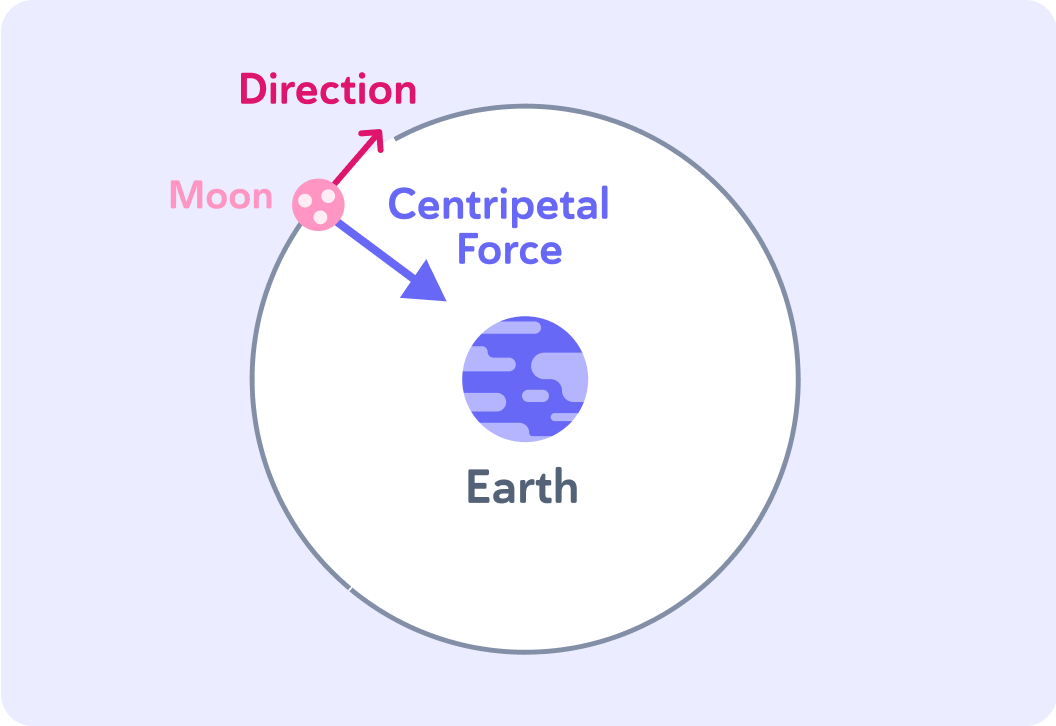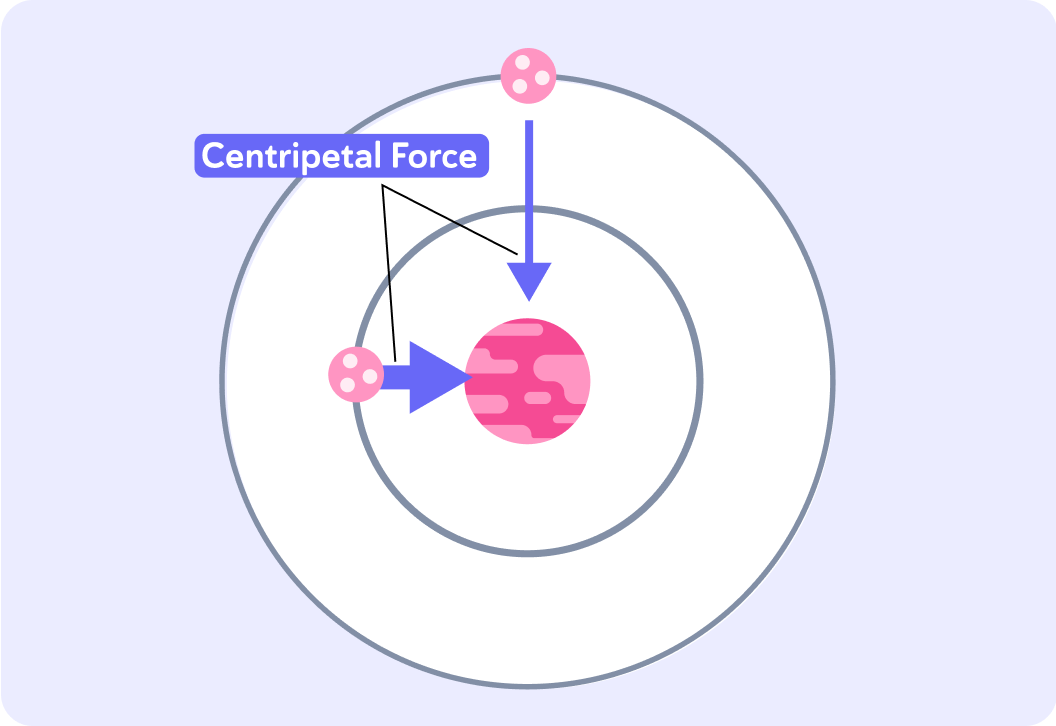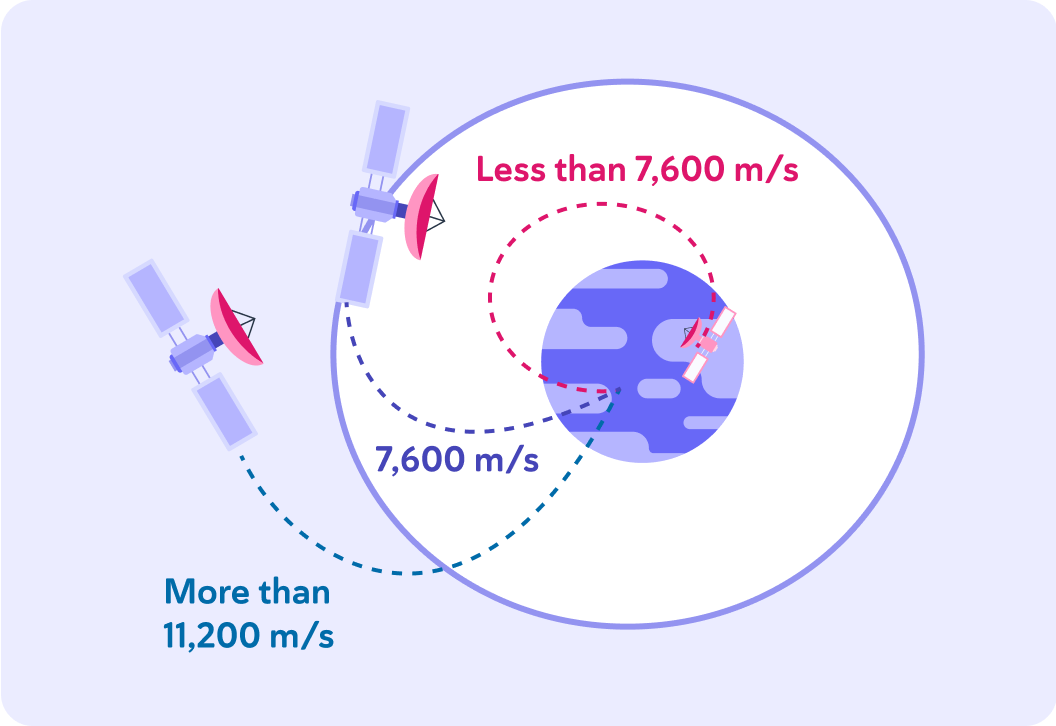YOU ARE LEARNING:
Orbital Motion

Orbital Motion
A satellite must be launched at exactly the right speed to land in a stable orbit, held by the centripetal force of Earth's gravity.
Orbital motion
The force that causes planets, moons and satellites to orbit other massive objects in space is the force of ___________.

When an object is in a stable, circular orbit, like the Moon, does it change its speed? Answer yes or no.

So an object in a stable, circular orbit travels at constant speed. However, it is constantly changing its direction. What does that mean for its velocity?

What is another word for a change in speed or a change in velocity?

True or false? The Moon is accelerating around the Earth, moving at constant speed.

So an object moving in a circular orbit is constantly accelerating, even though its speed may be constant
This is because acceleration is also defined as a change in velocity.

Now, Newton's Second Law of Motion says that...
an object will only accelerate if a resultant force acts on it.

What is the force called in the image that makes the Moon accelerate and remain in a circular orbit around Earth?


For an object moving in a circle, the resultant force that keeps it moving in a circle is the centripetal force
It acts towards the centre of the circle. In the case of the Moon, the centripetal force is the gravitational attraction between the Moon and the Earth.

Where is the gravitational force that an object produces the strongest?

So which satellites will experience more acceleration, due to the gravity of Earth?

To recap! A change in velocity means the object accelerates
All objects in circular motion will accelerate, because they will be constantly changing their direction, and therefore their velocity.

The force that makes an object accelerate to remain in orbit is the centripetal force
The centripetal force acts towards the centre of the circle. In the case of the Moon and the Earth, the centripetal force is the gravitational force between them.

The gravitational force of an object is greater, the closer you are to that object
So satellites with a large radius (the ones that travel higher up) experience less centripetal force and less acceleration than the satellites that travel closer to Earth's surface.

Imagine you had a satellite that was orbiting too slowly. If you wanted to speed it up to make it orbit the Earth faster, you would have to...

This diagram shows what happens when we shoot a satellite into orbit
There are 3 ways this can turn out.

What speed should we launch a satellite at to make it land in a stable orbit?


To land in a stable orbit, a satellite must be travelling at 7,600 m/s (or 17,000 mph)
The minimum speed required to land in a stable orbit is called the escape velocity.

What happens if the satellite has a speed less than 7,600m/s ?
A) It falls back down to Earth. B) It flies off into space.


If a satellite is launched with too much speed, Earth's gravity won't be strong enough to keep it in orbital motion. At what speed does that happen?


Summary
It is the centripetal force that keeps an object in circular orbit
In the case of satellites orbiting Earth, this force is Earth's gravitational force.
For a satellite to land in a stable orbit...
its speed has to be just right.
If the satellite is travelling at less than 7,600 m/s (the "escape velocity")...
then Earth's gravity will be too strong, and the satellite will fall back to Earth.
If the satellite is travelling at more than 11,200 m/s...
then Earth's gravity will be too weak, and the satellite will fly off into space.
